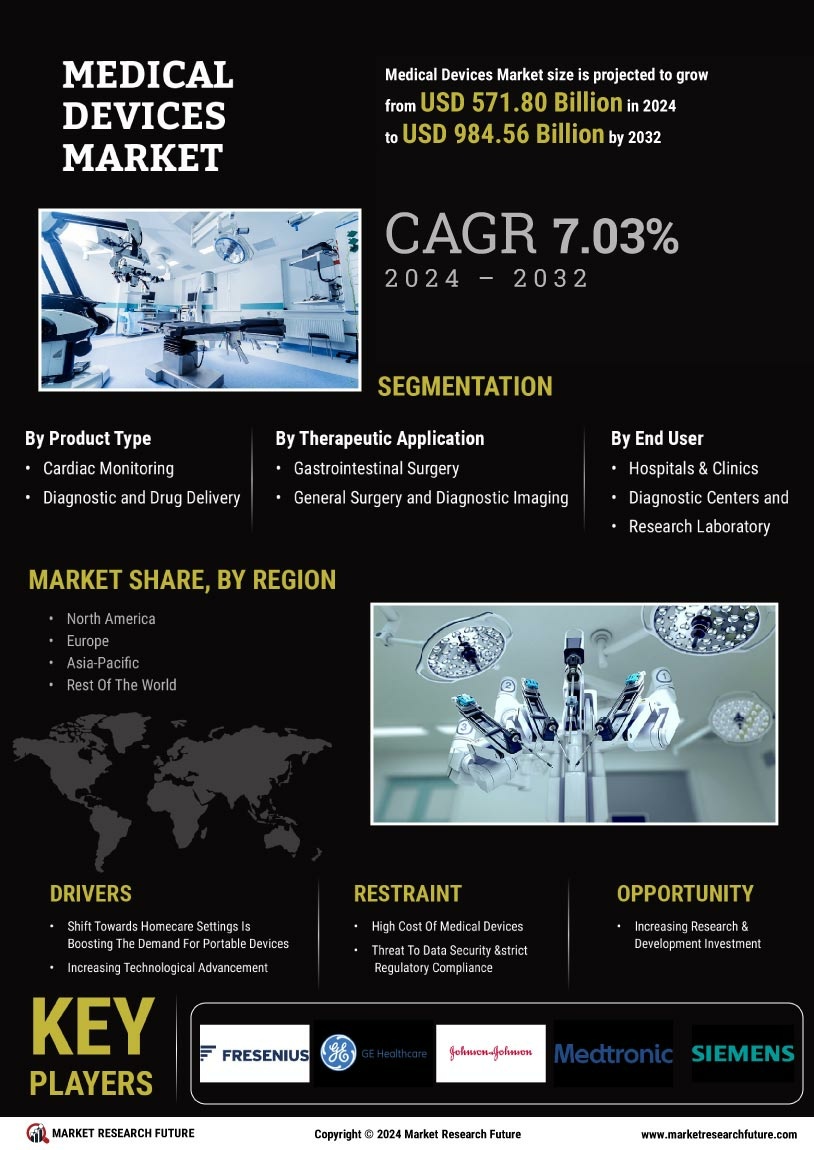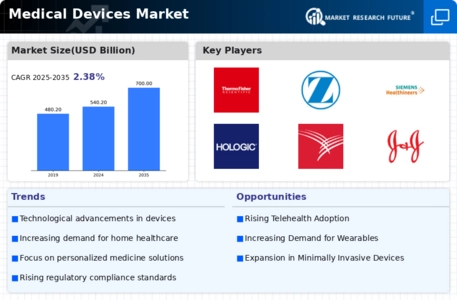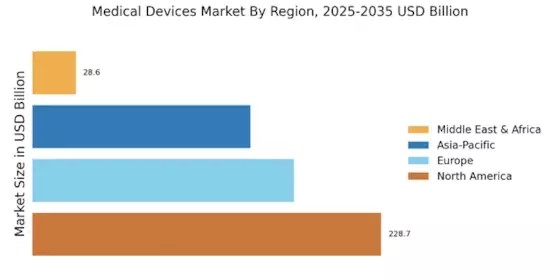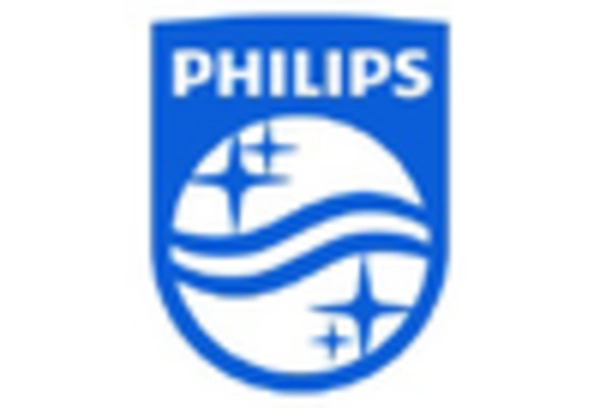Aging Population
The aging population is a critical driver of the Medical Devices Market. As life expectancy increases, the demand for healthcare devices that cater to chronic conditions and age-related health issues rises. By 2025, it is projected that the number of individuals aged 65 and older will surpass 1.5 billion worldwide. This demographic shift necessitates advanced healthcare devices for monitoring, diagnosis, and treatment, thereby propelling market growth. The Medical Devices Market must adapt to the unique needs of older adults, including mobility aids, diagnostic equipment, and home healthcare devices. This trend indicates a sustained demand for innovative solutions that enhance the quality of life for the elderly, ultimately driving revenue growth in the sector.
Technological Innovations
Technological innovations are reshaping the Medical Devices Market, leading to enhanced product offerings and improved patient outcomes. The integration of artificial intelligence, telemedicine, and wearable technology is revolutionizing how healthcare is delivered. For instance, the market for wearable healthcare devices is expected to reach over 60 billion by 2025, reflecting a growing consumer preference for health monitoring solutions. These advancements enable real-time data collection and analysis, facilitating proactive healthcare management. As technology continues to evolve, the Medical Devices Market is likely to witness an influx of smart devices that not only improve efficiency but also enhance patient engagement and adherence to treatment protocols.
Increased Healthcare Expenditure
Increased healthcare expenditure is a driving force behind the growth of the Medical Devices Market. Governments and private sectors are investing more in healthcare infrastructure, leading to greater accessibility and availability of medical consumables. In many regions, healthcare spending is projected to grow at a compound annual growth rate of 5% or more, reflecting a commitment to improving health outcomes. This financial support enables healthcare providers to acquire advanced medical equipement, thereby enhancing diagnostic and treatment capabilities. The Medical Devices Market stands to benefit from this trend, as increased funding translates into higher demand for innovative medical technologies that can address diverse health challenges.
Rising Prevalence of Chronic Diseases
The increasing prevalence of chronic diseases is a significant factor influencing the Medical Devices Market. Conditions such as diabetes, cardiovascular diseases, and respiratory disorders are on the rise, necessitating advanced medical equipements for effective management and treatment. According to recent estimates, chronic diseases account for approximately 70% of all deaths globally, highlighting the urgent need for innovative medical solutions. The Medical Devices Market is responding by developing devices that facilitate early diagnosis, continuous monitoring, and personalized treatment plans. This trend not only drives demand for existing devices but also encourages research and development of new technologies, thereby expanding the healthcare devices market landscape.
Focus on Minimally Invasive Procedures
The focus on minimally invasive procedures is significantly influencing the Medical Devices Market. These procedures offer numerous advantages, including reduced recovery times, lower risk of complications, and improved patient satisfaction. As surgical techniques evolve, there is a growing demand for devices that facilitate minimally invasive interventions. The market for minimally invasive surgical devices is expected to grow substantially, driven by advancements in robotics and imaging technologies. This trend not only enhances surgical outcomes but also reduces overall healthcare costs, making it an attractive option for both patients and providers. The Devices Market is likely to see continued investment in this area, fostering innovation and expanding the range of available solutions.

















